Kit Pack

How do I prepare a travel first aid kit for my next trip ?
When preparing for your next adventure, it's essential to pack a travel first aid kit. This will ensure that you are prepared for any unexpected injuries or illnesses that may occur while away from home. Here are some steps to follow when creating your own travel first aid kit: 1. Choose the right bag or container that is durable, compact, and easy to carry. A waterproof bag with multiple compartments and pockets is ideal as it allows for efficient organization of supplies. 2. Pack essential medical supplies such as bandages, antiseptic wipes, gauze pads, adhesive tape, and scissors. These items are crucial for treating cuts, scrapes, and other minor injuries. Include pain relievers, allergy medication, and motion sickness pills. 3. If taking regular medications, bring enough to last throughout the trip. Over-the-counter drugs like antacids, laxatives, and anti-diarrheal pills should also be packed, along with any prescription medications needed. 4. Depending on the destination and activities planned, specialized items may be necessary. For example, insect repellent, sunscreen, and blister kits are useful for hiking or camping trips. Anti-malarial medication and water purification tablets are important for tropical climates. 5. Customize the travel first aid kit based on individual needs. If allergies or chronic conditions exist, include appropriate medications and supplies. Don't forget to pack a small first aid manual or guidebook for reference in case of an emergency.

What should be included in a basic emergency kit ?
A basic emergency kit should include essential items such as water, non-perishable food, a first aid kit, warm clothing and bedding, lighting and communication tools, a multipurpose tool, cash, personal documents, and a map. The contents may vary depending on the type of emergency and household size. It is important to regularly review and update the kit to ensure it remains effective.

What are the essential items to include in a disaster preparedness kit ?
A disaster preparedness kit should include essential items such as water, non-perishable food, a first aid kit, warm clothing and bedding, light sources, communication devices, tools, cash, important documents, and personal items. It is crucial to regularly check and replace expired items to ensure the kit is ready for any emergency situation.
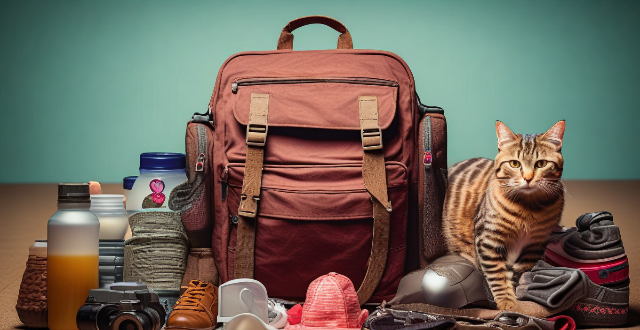
What are the essential items to pack for a backpacking trip across Europe ?
When backpacking across Europe, it's crucial to pack essential items that cater to your needs during the journey. These include versatile and lightweight clothing, comfortable shoes, warm layers, basic toiletries, sun protection, a first aid kit, a well-fitted backpack, a sleeping bag, a headlamp or flashlight, power bank and chargers, a travel adapter, a camera, travel documents and money, a reusable water bottle, a daypack, a travel journal and pen, and a lock. Packing light is key for an enjoyable trip.
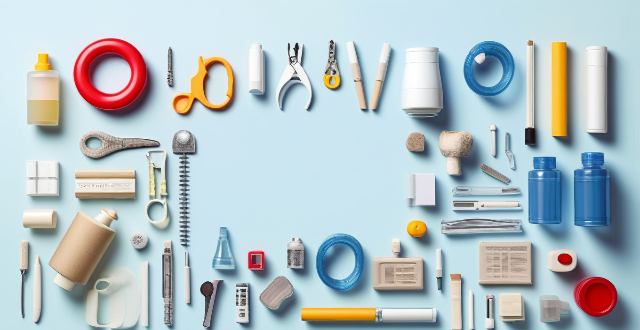
What kind of first aid supplies should I have in my home emergency kit ?
This article provides a comprehensive list of essential items to include in a home emergency first aid kit. It covers various categories such as adhesive bandages, gauze and roller bandages, medical tape and safety pins, antiseptics and disinfectants, pain relievers and fever reducers, tools and miscellaneous items, and personal items. The article emphasizes the importance of regularly checking expiration dates and replacing supplies as needed. It also suggests ensuring that all family members are aware of the kit's location and how to use its contents properly.

What should I pack for an adventure travel activity ?
Adventure travel activities can be thrilling and exciting, but it's important to pack the right gear to ensure your safety and comfort. Here are some essential items to consider packing for your next adventure: - Clothing: A waterproof jacket with a high waterproof rating and breathability is essential for outdoor activities in wet conditions. Quick-dry shirts and pants that are comfortable to move in and suitable for the climate you'll be traveling in are ideal. Comfortable shoes or boots that provide support, traction, and comfort are also important. Pack warm layers like a fleece jacket or sweater for cooler temperatures. - Gear: Choose a backpack that's comfortable to wear and has enough space for all your gear. A headlamp or flashlight is essential for navigating in the dark or during power outages. Pack extra batteries or a charger to ensure you have enough light throughout your trip. A well-stocked first aid kit with bandages, antiseptic wipes, pain relievers, and any prescription medications you may need is important. A multi-tool can come in handy for various tasks. - Other Essentials: A reusable water bottle and a water filter or purification tablets are crucial for staying hydrated. High-energy snacks and food that are easy to carry and won't spoil quickly are great options for fueling up during your adventure. Reliable navigation tools like a map, compass, or GPS device are essential for finding your way in unfamiliar terrain. By packing these essential items, you'll be prepared for whatever challenges come your way during your adventure travel activity. Remember to also check the weather forecast and any specific requirements for your destination to ensure you have everything you need for a safe and enjoyable trip.

How can I customize my emergency kit for specific medical needs ?
Customizing an emergency kit for specific medical needs is crucial for individuals with health conditions. To tailor your kit, assess your medical needs, list down medications, and identify potential complications. Incorporate specialized equipment like diabetes management tools or heart condition medication. Include general first aid supplies, information cards, and instruction manuals. Don't forget communication tools and personal comfort items to alleviate stress during emergencies. Being prepared can significantly impact managing your health in disaster situations.

How important is it to have a portable emergency kit when traveling abroad ?
**The Importance of a Portable Emergency Kit for Traveling Abroad** Embarking on an international journey requires preparation, especially in handling unforeseen events. Here's why carrying a portable emergency kit is crucial: 1. **Preparedness for Unexpected Circumstances**: It helps manage medical emergencies, natural disasters, and travel delays effectively. 2. **Components of an Ideal Emergency Kit**: Includes first aid supplies, hygiene items, nutrition, lighting, important documents, and protective gear. 3. **Customization Based on Destination**: Tailor the kit to climate considerations and location-specific needs for better preparedness. 4. **Peace of Mind**: Being prepared offers peace of mind, allowing focus on enjoying the trip rather than worrying about potential issues.

What kind of clothing should I pack for a trip to Africa ?
When packing for a trip to Africa, it's important to consider the climate and culture of the region you'll be visiting. Here are some essential clothing items to pack: - Lightweight and breathable fabrics such as cotton, linen, and rayon. - Long sleeve shirts and pants to protect your skin from the sun and insects. - A wide-brimmed hat to shade your face and neck. - Comfortable walking shoes or sandals with good support. - A light jacket or sweater for cooler evenings. - Sunglasses and sunscreen with high SPF protection. - Insect repellent to keep mosquitoes and other bugs at bay. It's also important to dress respectfully when traveling in Africa. Many African countries have conservative dress codes, especially in rural areas. Here are some tips to keep in mind: * Avoid wearing revealing or tight-fitting clothing. * Cover your shoulders and knees when visiting religious sites or conservative communities. * Women may want to bring a scarf or pashmina to cover their hair in certain situations. * Avoid wearing excessive amounts of jewelry or expensive accessories, as this can attract unwanted attention. The climate in Africa varies widely depending on the region and season. Here are some general guidelines for different seasons: Dry Season (November to April): * Lightweight clothing made of natural fibers like cotton and linen. * Shorts, skirts, and t-shirts for hot weather. * A light jacket or sweater for cooler evenings. * Sunglasses and sunscreen with high SPF protection. Wet Season (May to October): * Waterproof jacket or raincoat. * Quick-drying clothes that can be easily washed and dried. * Warm layers for cooler temperatures, especially in the evenings. * Insect repellent to keep mosquitoes and other bugs at bay. Year-Round Tips: * Pack clothing in neutral colors that can be mixed and matched easily. * Bring comfortable walking shoes or sandals with good support. * Don't forget a swimsuit if you plan on going to the beach or taking part in water activities. * Pack a small first aid kit with basic supplies like bandages, antiseptic wipes, and pain relievers.

How important is an earthquake emergency kit, and what should it contain ?
The text discusses the importance of being prepared for earthquakes by having an emergency kit with essential items such as water, food, a first aid kit, light sources, clothing, bedding or shelter, tools, sanitation and personal needs, important documents, cash, communication tools, maps and information. It also mentions additional considerations like pet care and multi-tools.

What should I pack for a cultural exploration journey ?
When embarking on a cultural exploration journey, itWhen embarking on a cultural exploration journey, it that will enhance your experience and it is important to pack items that will enhance your experience and ensure your comfort throughout the trip. Essential items include comfortable walking shoes, lightweight clothing, culturally appropriate attire, camera, portable charger, travel adapter, sunscreen, insect repellent, basic toiletries, reusable water bottle, daypack, and travel journal. Research the specific needs and customs of the culture you will be visiting to tailor your packing list accordingly.

What are the essential items to pack for a backpacking trip ?
Essential Items to Pack for a Backpacking Trip: Shelter and Sleeping Gear, Clothing, Food and Water, Cooking and Eating Utensils, First Aid Kit and Safety Items, Navigation Tools, and Miscellaneous Items.

What should I pack for a photography trip to a tropical destination ?
When planning a photography trip to a tropical destination, it's essential to pack the right gear and clothing to ensure you capture stunning images while staying comfortable and protected from the elements. Here are some items you should consider packing: Camera Gear: Primary camera body, backup camera body, variety of lenses, sturdy tripod, filters, high-capacity memory cards, extra batteries and charger, cleaning kit. Clothing and Accessories: Lightweight clothing made from natural fabrics like cotton or linen, waterproof jacket or raincoat, hat and sunglasses, sunscreen, insect repellent, comfortable shoes suitable for walking on uneven terrain or hiking trails, swimwear if you plan to swim or snorkel. Miscellaneous Items: Comfortable backpack or camera bag with enough space to carry all your gear and personal belongings, reusable water bottle filled with clean drinking water, snacks like energy bars, nuts or fruits to keep your energy levels up during long shoots or hikes, small first aid kit with essential items like bandages, antiseptic wipes, pain relievers and any prescription medications you may need, guidebooks or maps of the area you'll be exploring to help you navigate and find interesting locations to photograph.

How do I assemble an emergency preparedness kit for my office ?
The text provides a detailed guide on how to assemble an emergency preparedness kit for your office, highlighting the importance of being prepared for potential emergencies. It outlines the steps involved in creating a comprehensive kit, including identifying potential emergencies, choosing a suitable container, and selecting essential items such as water, food, first aid supplies, light sources, battery-powered radios, personal items, tools, important documents, and sanitation supplies. The article emphasizes the need to regularly check and update the kit to ensure its usability and relevance to potential emergencies in the area.
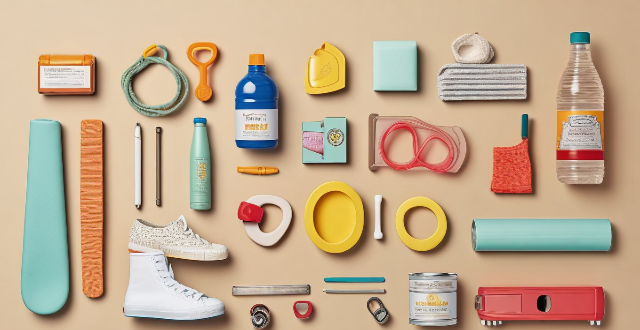
Are there any special considerations for creating an emergency kit for children ?
Special considerations for creating an emergency kit for children include age-appropriate items, comfort items, snacks and water, clothing and footwear, and entertainment. It is important to tailor the contents of the kit to the child's needs and abilities, and include items that can help to calm and reassure the child during an emergency situation.

What is the best way to store an emergency kit in a small apartment ?
When it comes to emergency preparedness, having an emergency kit is essential. However, if you live in a small apartment, finding the space to store all the necessary items can be challenging. Here are some tips on how to store an emergency kit in a small apartment: Determine the type of emergency kit you need, choose the right container, organize your kit, and store it properly. Keep your emergency kit in an easily accessible location, avoid storing it under heavy objects or in areas that may be blocked by debris during an emergency, check it regularly to ensure that items are still usable and up-to-date, replace any expired items promptly, and consider storing additional copies of important documents in your emergency kit. By following these tips, you can effectively store an emergency kit in a small apartment while still being prepared for any potential emergencies.

How often should I check and replace items in my emergency preparedness kit ?
Maintaining an emergency preparedness kit is crucial for ensuring you have the necessary supplies in case of unexpected events. The frequency of checking and replacing items depends on several factors, including expiration dates and usage. General guidelines include monthly quick inspections, annual detailed reviews, and immediate replacements after use. Specific items to consider are medical supplies, food and water, batteries, clothing, and tools. Best practices include labeling expiration dates, keeping a list, and staying informed. Regular maintenance ensures your kit is always ready for emergencies.
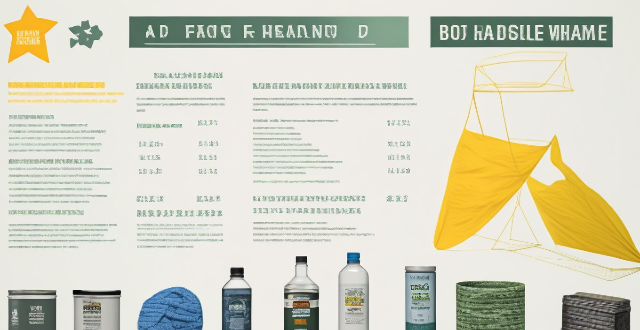
Is there a standard list of supplies for an earthquake survival kit ?
There is a standard list of supplies recommended for an earthquake survival kit, including water, non-perishable food, first aid supplies, warm clothing, shelter items, tools and supplies, important documents, and miscellaneous items. It's important to customize your kit based on your specific needs and circumstances.

What are the essential items to include in a home first aid kit ?
A well-stocked first aid kit is an essential component of any home. It should contain items that can help you deal with minor injuries and illnesses that may occur in your household. Here are some of the essential items that you should include in your home first aid kit: 1. Adhesive Bandages 2. Sterile Gauze Pads and Rolls 3. Medical Tape 4. Antiseptic Wipes or Solution 5. Tweezers 6. Scissors 7. Thermometer 8. Pain Relievers 9. Antihistamines 10. Cold and Hot Packs 11. Latex Gloves 12. Safety Pins
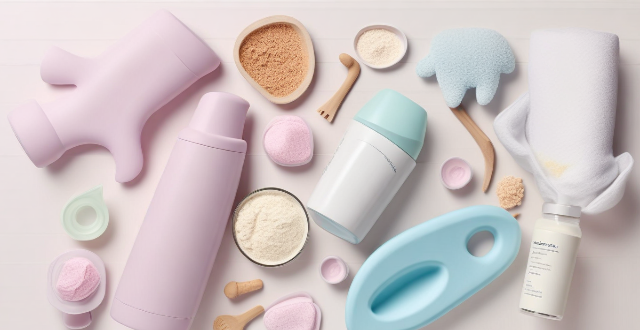
What should be included in a baby's first aid kit ?
The text provides a comprehensive list of items that should be included in a baby's first aid kit, organized into several categories: Basic Supplies (bandages, gauze pads, adhesive tape, antibiotic ointment, scissors, tweezers, disposable gloves, cotton swabs, thermometer); Pain Relief and Fever Reducers (Infant Tylenol or Motrin, teething tablets or gels); Digestive Issues (infant gas drops, oral rehydration solution); Skin Care (diaper rash cream, calamine lotion, hydrocortisone cream); Allergies and Cold Symptoms (saline nasal drops or spray, children's allergy medication, children's cough syrup); Miscellaneous Items (bulb syringe, instant cold pack, small flashlight with extra batteries, emergency contact information). The purpose of the text is to help parents be prepared for minor emergencies that may arise while caring for their baby by having these essential items readily available.
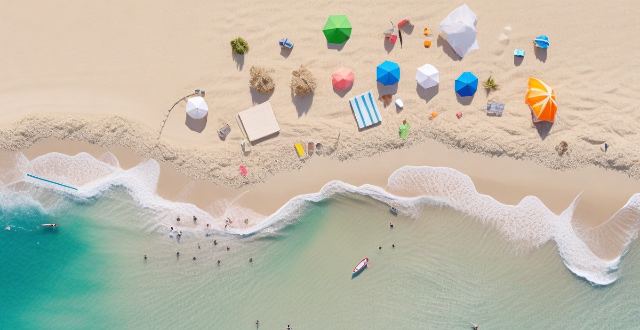
What are the essential items to pack for a beach vacation ?
When planning a beach vacation, it's essential to pack the right items. Must-haves include swimsuits, cover-ups, sun protection, footwear, towels, beach gear, water activity equipment, and extras like a waterproof phone case and first aid kit. Personalize your packing list based on your specific needs and activities planned during your beach vacation.

Are there any specific toiletries I need to bring for a camping adventure ?
When embarking on a camping adventure, it's important to pack the essential toiletries to ensure you stay clean and comfortable throughout your trip. Here are some specific items you should consider bringing: - Personal Hygiene Items such as toothbrush and toothpaste, soap or body wash, shampoo and conditioner, deodorant, razor and shaving cream, tissues or toilet paper, hand sanitizer, sunscreen, insect repellent, lip balm with SPF, and feminine hygiene products. - Hair Care Items like comb or brush, hair ties or clips, dry shampoo, hairbands or headscarves. - Oral Care Items including dental floss, mouthwash, tongue scraper, toothpicks. - Foot Care Items such as nail clippers or scissors, moleskin or bandages, foot powder, shoe deodorizers. - Miscellaneous Items like earplugs, eye mask, small mirror, travel pillow, wet wipes, first aid kit, laundry soap or detergent tablets, sewing kit, baby powder or cornstarch, extra plastic bags or compression sacks. Remember to pack these items in waterproof bags to protect them from moisture, and consider investing in reusable containers to reduce waste. With this comprehensive list, you'll be well-prepared for your next camping adventure!

How should I prepare my vehicle for a long-distance road trip ?
Preparing Your Vehicle for a Long-Distance Road Trip A long-distance road trip is an exciting adventure, but it's essential to ensure that your vehicle is in top condition before hitting the open road. Here are some steps you can take to prepare your car for the journey ahead: Check the basics such as tires, fluids, lights, and battery. Perform safety checks on brakes, suspension, belts, and hoses. Make sure your entertainment system and charging ports are working correctly. Consider installing seat covers and using organizers or storage solutions to keep items tidy and accessible during the trip. Don't forget to pack an emergency kit with jumper cables, a flashlight, reflective triangles, and a first aid kit just in case you encounter any issues along the way.
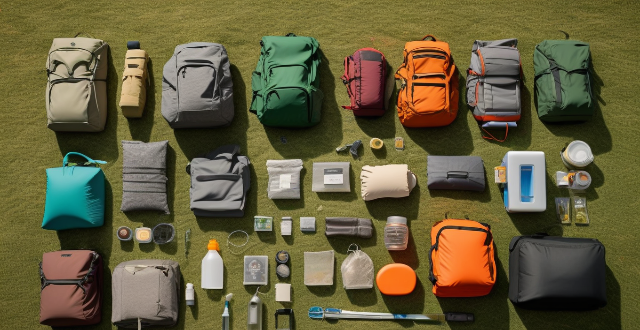
What should I pack for a nature and wildlife adventure ?
This packing list outlines essential and optional items for a nature and wildlife adventure. Essential items include appropriate clothing, equipment such as a backpack and tent, food and water supplies, safety and first aid provisions, and miscellaneous items like insect repellent and sunscreen. Optional items may include entertainment, personal items, and extra gear such as trekking poles and dry bags. It is important to pack according to the specific activities planned and the climate of the destination, and to check the weather forecast before departure to adjust the packing list accordingly.

Is there a checklist for what to pack for different types of vacations (beach, mountain, city) ?
This is a checklist for packing for different types of vacations. The list includes essentials, clothing, toiletries, and miscellaneous items that are necessary for each type of vacation. For a beach vacation, the essentials include a swimsuit, sunscreen, sunglasses, hat or cap, and beach towel. Lightweight clothing such as shorts, t-shirts, and dresses are recommended along with flip flops or sandals. Toiletries include shampoo and conditioner, body wash, toothbrush and toothpaste, and deodorant. Miscellaneous items include books or magazines, a portable charger for electronics, a water bottle, and snacks for the beach. For a mountain vacation, the essentials include hiking boots or sturdy shoes, a warm jacket or coat, a hat or beanie, and gloves if necessary. Warm layers such as sweaters, fleeces, and long underwear are recommended along with a waterproof outer layer if necessary. Socks made of wool or synthetic blend are also recommended. Toiletries include shampoo and conditioner, body wash, toothbrush and toothpaste, and deodorant. Miscellaneous items include a backpack with a water reservoir or hydration pack, a headlamp or flashlight, a map or navigation tools, and a first aid kit. For a city vacation, the essentials include comfortable walking shoes, a lightweight jacket or coat, a hat or cap, and a crossbody bag or backpack for carrying essentials. A mix of casual and dressy outfits depending on planned activities is recommended along with lightweight layers for variable weather. Dress shoes or nice sandals for dinners or events are also recommended. Toiletries include shampoo and conditioner, body wash, toothbrush and toothpaste, and deodorant. Miscellaneous items include a phone or camera for taking photos, a portable charger for electronics, a guidebook or map of the city, and cash or credit card for shopping and dining out.

How can pet owners ensure the safety of their animals during an earthquake ?
Pet owners play a crucial role in ensuring the safety of their pets during emergencies like earthquakes. Here are some tips to help you protect your pets in case of seismic activity: 1. Prepare an emergency kit for your pets, including essential items such as water, food, medications, medical records, a first aid kit, a collar and leash, a carrier or crate, toys, and bedding. 2. Create a safe space for your pet by identifying an interior room without windows, such as a bathroom or closet, where you can take your pet during the earthquake. Avoid areas with heavy objects that could fall and cause injury. 3. Practice evacuation drills with your family and pets, familiarizing your pet with its carrier or crate and teaching it to go to its designated safe space on command. 4. Stay informed about earthquake preparedness by following local authorities and connecting with your veterinarian for advice on how to handle your specific pet during an emergency situation. By following these steps, you can help ensure the safety of your pets during an earthquake. Remember, being prepared is key to protecting both yourself and your beloved animals in times of crisis.
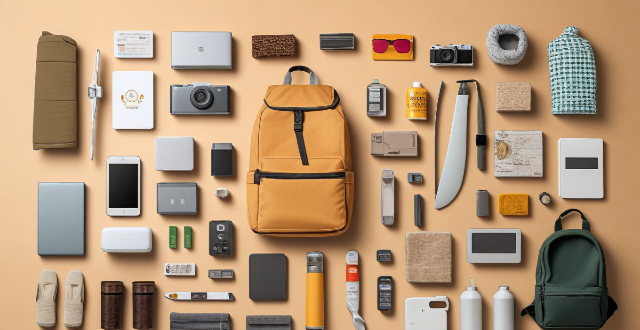
What should I pack for a week-long cruise trip ?
This guide provides a comprehensive list of essentials to bring on a week-long cruise trip, including personal care items, clothing and accessories, electronics and entertainment, miscellaneous items, and tips for efficient packing. It suggests packing travel-sized toiletries, necessary medications, comfortable casual wear, dressy attire for formal nights, swimwear, cover-ups, evening wear, suitable footwear, a camera or smartphone for capturing memories, chargers for electronic devices, books or an e-reader for relaxation, useful travel apps, sun protection items like sunglasses and hats, luggage locks for security, a daypack for shore excursions, a water bottle to stay hydrated, and important documents such as passports and IDs. The guide also includes tips for efficient packing like rolling clothes instead of folding them, using packing cubes or compression bags to keep items organized and separate, limiting shoes to versatile footwear that can be worn with multiple outfits, checking the weather forecast and packing accordingly, and considering laundry options either onboard or by washing items in the sink to reuse.

How can women ensure they have access to medical care and support in case of illness or injury while traveling ?
How Can Women Ensure They Have Access to Medical Care and Support in Case of Illness or Injury While Traveling? Traveling can be an exciting adventure, but it's important to ensure that you have access to medical care and support in case of illness or injury. Here are some tips for women to ensure they have access to medical care while traveling: 1. Research Before You Go: Before embarking on your journey, research the local healthcare system and facilities. Look for hospitals, clinics, and pharmacies in the area you will be visiting. Make a list of emergency numbers and keep them with you at all times. 2. Get Travel Insurance: Consider purchasing travel insurance that includes medical coverage. This will give you peace of mind knowing that you are covered in case of an unexpected illness or injury. 3. Pack a First Aid Kit: Pack a first aid kit with essential items such as bandages, antiseptic wipes, pain relievers, and any prescription medications you may need. It's also a good idea to bring along copies of your prescriptions in case you need to refill them while traveling. 4. Stay Healthy: Take steps to stay healthy while traveling. Wash your hands frequently, eat nutritious meals, drink plenty of water, and get enough sleep. Avoid risky behaviors such as excessive alcohol consumption or participating in dangerous activities without proper safety gear. 5. Seek Help When Needed: If you do become ill or injured while traveling, don't hesitate to seek medical attention. Many countries have English-speaking doctors and nurses who can provide assistance. If you are unable to communicate effectively with local healthcare providers, consider using translation services or seeking out expatriate communities for support. In conclusion, ensuring access to medical care and support while traveling is crucial for women's health and safety. By doing your research beforehand, getting travel insurance, packing a first aid kit, staying healthy, and seeking help when needed, you can enjoy your travels with peace of mind knowing that you are prepared for any potential emergencies.
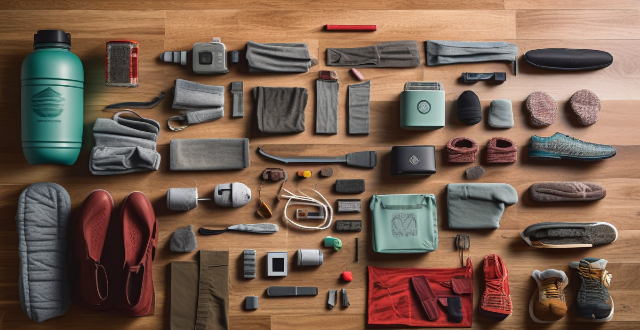
What are the best travel packing tips for a long trip ?
Packing for a long trip can be challenging, but with these tips, you'll be able to pack efficiently and strategically. Plan your outfits, pack lightweight clothing, choose versatile shoes, pack smart accessories, bring multipurpose toiletries, use packing cubes or compression sacks, and leave room for souvenirs. By following these tips, you'll have everything you need for your journey without overpacking or sacrificing style.

What is a Series Hybrid Electric Vehicle (SHEV) ?
A Series Hybrid Electric Vehicle (SHEV) is a type of hybrid vehicle that uses an internal combustion engine and an electric motor to power the wheels. The engine generates electricity to charge the battery pack or provide power to the electric motor, which then drives the wheels. Some SHEVs have regenerative braking systems that capture energy during braking and use it to recharge the battery pack. Advantages of a SHEV include improved fuel economy, reduced emissions, increased torque, and quiet operation. Disadvantages include complexity, weight, limited range, and higher cost.